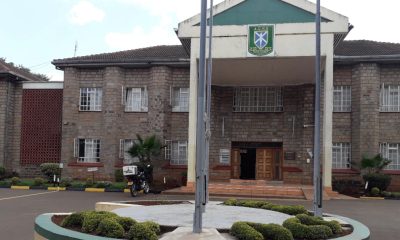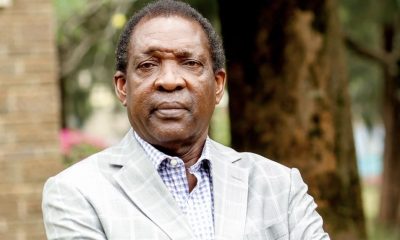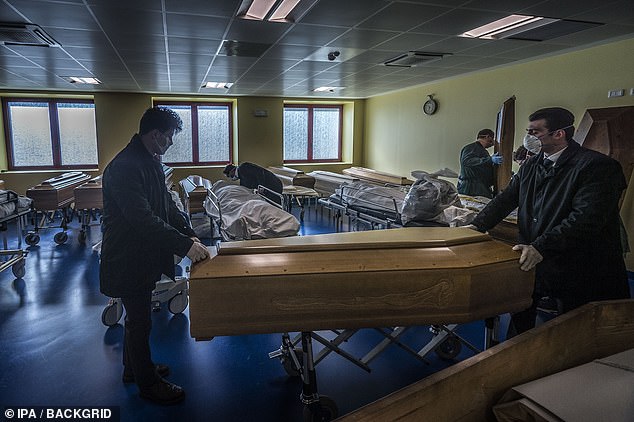Hurried burial of Covid19 victim in Siaya has left many traumatized with the barbarism. The victim was buried in a body bag very uncommon of the Luo culture. Since we’re dealing a new virus with many myths and facts, question that stands is there possibilities of dead body to people transmissions?
According to a WHO report on how to dispose the bodies of Covid19, it disputes claims of infections by exposure. “To date there is no evidence of persons having become infected from exposure to the bodies of persons who died from COVID-19.” Reads the report.
Report goes further to answer as to whether bodies should be cremated or buried as normal;
Except in cases of hemorrhagic fevers (such as Ebola, Marburg) and cholera, dead bodies are generally not infectious. Only the lungs of patients with pandemic influenza, if handled improperly during an autopsy, can be infectious. Otherwise, cadavers do not transmit disease. It is a common myth that persons who have died of a communicable disease should be cremated, but this is not true. Cremation is a matter of cultural choice and available resources.
The safety and well-being of everyone who tends to bodies should be the first priority.
Before attending to a body, people should ensure that the necessary hand hygiene and personal protective equipment (PPE) supplies are available.
WHO report says;
• The dignity of the dead, their cultural and religious traditions, and their families should be respected and protected throughout;
• Hasty disposal of a dead from COVID-19 should be avoided;
• Authorities should manage each situation on a case-by-case basis, balancing the rights of the family, the need to investigate the cause of death, and the risks of exposure to infection.
WHO states clearly that bodies of those die of Covid19 can either be buried or cremated, however, they list certain precautions on the burial;
• Family and friends may view the body after it has been prepared for burial, in accordance with customs. They should not touch or kiss the body and should wash hands thoroughly with soap and water after the viewing;
• Those tasked with placing the body in the grave, on the funeral pyre, etc., should wear gloves and wash hands with soap and water after removal of the gloves once the burial is complete.
Burial by family members or for deaths at home
In contexts where mortuary services are not standard or reliably available, or where it is usual for ill people to die at home, families and traditional burial attendants can be equipped and educated to bury people under supervision.
• Any person (e.g. family member, religious leader) preparing the deceased (e.g. washing, cleaning or dressing body, tidying hair, trimming nails or shaving) in a community setting should wear gloves for any contact with the body. For any activity that may involve splashing of bodily fluids, eye and mouth protection (face shield or goggles and medical mask) should be worn. Clothing worn to prepare the body should be immediately removed and washed after the procedure, or an apron or gown should be worn;
• The person preparing the body should not kiss the deceased. Anyone who has assisted in preparing the body should thoroughly wash their hands with soap and water when finished;
• Apply principles of cultural sensitivity and ensure that family members reduce their exposure as much as possible. Children, older people (>60 years old), and anyone with underlying illnesses (such as respiratory illness, heart disease, diabetes, or compromised immune systems) should not be involved in preparing the body. A minimum number of people should be involved in preparations. Others may observe without touching the body at a minimum distance of 1 m.
• Family and friends may view the body after it has been prepared for burial, in accordance with customs. They should not touch or kiss the body and should wash their hands thoroughly with soap and water following the viewing; physical distancing measures should be strictly applied (at least 1 m between people).
• People with respiratory symptoms should not participate in the viewing or at least wear a medical mask to prevent contamination of the place and further transmission of the disease to others;
• Those tasked with placing the body in the grave, on the funeral pyre, etc. should wear gloves and wash hands with soap and water once the burial is complete;
• Cleaning of reusable PPE should be conducted in accordance with manufacturer’s instructions for all cleaning and disinfection products (e.g. concentration, application method and contact time, etc.);
• Children, adults > 60 years, and immunosuppressed persons should not directly interact with the body;
• Although burials should take place in a timely manner, in accordance with local practices, funeral ceremonies not involving the burial should be postponed, as much as possible, until the end of the epidemic. If a ceremony is held, the number of participants should be limited. Participants should
observe physical distancing at all times, plus
respiratory etiquette and hand hygiene.
• The belongings of the deceased person do not need to be burned or otherwise disposed of. However, they should be handled with gloves and cleaned with a detergent followed by disinfection with a solution of at least 70% ethanol or 0.1% (1000 ppm) bleach, and
• Clothing and other fabric belonging to the deceased should be machine washed with warm water at 60−90°C (140−194°F) and laundry detergent. If machine washing is not possible, linens can be soaked in hot water and soap in a large drum using a stick to stir and being careful to avoid splashing. The drum should then be emptied, and the linens soaked in 0.05% chlorine for approximately 30 minutes. Finally, the laundry should be rinsed with clean water and the linens allowed to dry fully in sunlight.
Adopted from WHO.
Kenya Insights allows guest blogging, if you want to be published on Kenya’s most authoritative and accurate blog, have an expose, news TIPS, story angles, human interest stories, drop us an email on [email protected] or via Telegram

 Investigations2 weeks ago
Investigations2 weeks ago
 Business2 days ago
Business2 days ago
 Business1 week ago
Business1 week ago
 Americas2 weeks ago
Americas2 weeks ago
 News2 weeks ago
News2 weeks ago
 Politics1 week ago
Politics1 week ago
 Business2 days ago
Business2 days ago
 Business1 week ago
Business1 week ago


















